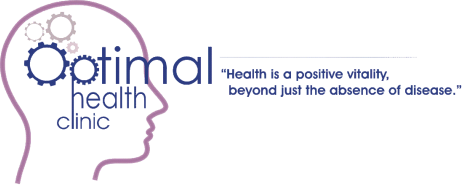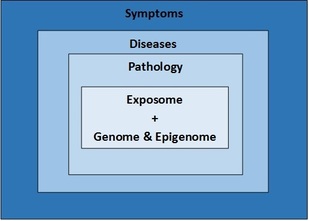They are super healthy and taste great. You can make a bigger batch for the whole week and enjoy in your salads at home or to go. They take only minutes to make.
Green Goddess Dressing
This is a rich and creamy dressing and avocados are an excellent source of monounsaturated fats and other nutrients important for healthy skin and hair.
Ingredients:
½ small avocado
½ cup water
1 garlic clove, peeled
1 Tbsp. raw apple cider vinegar/freshly squeezed lemon juice
¼ tsp. sea salt
1 small handful fresh parsley
Yield: about ¾ cup
Instructions:
Place all the ingredients, except for the parsley, in a blender and blend until smooth and creamy. Add the parsley and blend on low speed until combined. Store in the fridge to have on hand for the week.
Creamy Garlic-Hemp Seed Dressing
This is creamy, nut-free, dairy-free dressing ideal over your favourite green salad.
Ingredients:
½ cup hulled hemp seeds
½ cup water
2 Tbsp. raw apple cider vinegar
1-2 garlic cloves, peeled
½ tsp. kelp granules
¼ tsp. sea salt or Herbamare
Optional:
1 handful fresh cilantro
1 handful fresh parsley
1 handful fresh basil
Yields: about ¾ cup
Instructions:
Place all the ingredients in a blender (except the optional additions) and blend until smooth and creamy. Add any optional ingredients and blend again on low speed to incorporate. Store in a glass jar in the fridge for up to a week.
Creamy Sunflower Seed-Parsley Dressing
Ideal as a creamy dip for carrot sticks or cucumber slices or over salad of organic greens, grated raw beets, grated carrots, and broccoli sprouts.
Ingredients:
½ cup raw sunflower seeds
¼ cup water
3 Tbsp. raw apple cider vinegar
1 garlic clove, peeled
½ tsp. sea salt or Herbamare
¼ cup extra-virgin olive oil
1 small handful fresh parsley
Yields: about 1 ½ cups
Instructions:
Soak the sunflower seeds in a small bowl of filtered water for 6 to 8 hours, or overnight. Drain and rinse the seeds and place them in a blender along with the water, vinegar, garlic, and salt. Blend until super smooth and creamy. Then add the oil and parsley, blend on low speed until combined. Store in a glass jar in the fridge for up to 10 days.
Lemon-Garlic Dressing
Use this dressing in your salads or to top a bowl of lightly steamed vegetables.
Ingredients:
¼ cup extra-virgin olive oil
Zest and juice of 1 lemon
1 to 2 garlic cloves, crushed
¼ tsp. sea salt
Yields: ½ cup
Instructions:
Combine all the ingredients in a small bowl and whisk together. Store in the fridge for up to a week.
The recipes above come from the book ‘The elimination diet’ by Alissa Segersten and Tom Malterre.
Green Goddess Dressing
This is a rich and creamy dressing and avocados are an excellent source of monounsaturated fats and other nutrients important for healthy skin and hair.
Ingredients:
½ small avocado
½ cup water
1 garlic clove, peeled
1 Tbsp. raw apple cider vinegar/freshly squeezed lemon juice
¼ tsp. sea salt
1 small handful fresh parsley
Yield: about ¾ cup
Instructions:
Place all the ingredients, except for the parsley, in a blender and blend until smooth and creamy. Add the parsley and blend on low speed until combined. Store in the fridge to have on hand for the week.
Creamy Garlic-Hemp Seed Dressing
This is creamy, nut-free, dairy-free dressing ideal over your favourite green salad.
Ingredients:
½ cup hulled hemp seeds
½ cup water
2 Tbsp. raw apple cider vinegar
1-2 garlic cloves, peeled
½ tsp. kelp granules
¼ tsp. sea salt or Herbamare
Optional:
1 handful fresh cilantro
1 handful fresh parsley
1 handful fresh basil
Yields: about ¾ cup
Instructions:
Place all the ingredients in a blender (except the optional additions) and blend until smooth and creamy. Add any optional ingredients and blend again on low speed to incorporate. Store in a glass jar in the fridge for up to a week.
Creamy Sunflower Seed-Parsley Dressing
Ideal as a creamy dip for carrot sticks or cucumber slices or over salad of organic greens, grated raw beets, grated carrots, and broccoli sprouts.
Ingredients:
½ cup raw sunflower seeds
¼ cup water
3 Tbsp. raw apple cider vinegar
1 garlic clove, peeled
½ tsp. sea salt or Herbamare
¼ cup extra-virgin olive oil
1 small handful fresh parsley
Yields: about 1 ½ cups
Instructions:
Soak the sunflower seeds in a small bowl of filtered water for 6 to 8 hours, or overnight. Drain and rinse the seeds and place them in a blender along with the water, vinegar, garlic, and salt. Blend until super smooth and creamy. Then add the oil and parsley, blend on low speed until combined. Store in a glass jar in the fridge for up to 10 days.
Lemon-Garlic Dressing
Use this dressing in your salads or to top a bowl of lightly steamed vegetables.
Ingredients:
¼ cup extra-virgin olive oil
Zest and juice of 1 lemon
1 to 2 garlic cloves, crushed
¼ tsp. sea salt
Yields: ½ cup
Instructions:
Combine all the ingredients in a small bowl and whisk together. Store in the fridge for up to a week.
The recipes above come from the book ‘The elimination diet’ by Alissa Segersten and Tom Malterre.


 RSS Feed
RSS Feed